Scovill Mfg. Co.
American Optical Company
Front Focus Cone
View
Camera Variation 1.0
Front Focus Reversible Back View Camera Variation
1.0
St. Louis
View
Camera Variation 1.0
Scovill's
Photo. Series No. 20,
Dry Plate Making for
Amateurs,
1886, p.
a13
8 x 10" Label, probably nickel-plated
brass: "American Optical Comp'y - New York - Scovill Mfg. Co.,
Prop't'rs". Stamp, serial or assembly
number "9", near the front end of the platform track front extension. Stamp, serial or assembly
number "8" at the top of the rear standard, under the removable back. Stamp, "Flammang's - Pat.
Oct. 20, 1885". The piston device to keep the platform rigid is
the item to which this patent refers.
Manufacturer:
American Optical Co. New York, NY factory St. Louis View
Camera:
The St. Louis model is
identical to the
American Optical Flammang's Revolving Back Front Focus Camera, except
that it has a removable and
reversing back rather than a patent revolving back.
When advertised,
engravings for this camera usually
carry a "Scovill" identification
rather than an "American Optical"
identification. Yet many cameras exist, such as the
St. Louis Variation 1 8x10
example,
that are stamped American Optical or have a silver
label marked American Optical. Such AO-marked cameras have
the usual high quality construction and finish
associated with the AO factory. Other examples are
unlabeled, or have a Scovill & Adams Co. label (see
St. Louis Variation 3).
It is possible that St. Lous cameras were made in both the American Optical factory in
New York City (where the high quality and craftsmanship cameras were
made) and the Scovill factory in New Haven, CT (where the less quality
craftsmanship cameras were made).
At least
five variations of the St. Louis exist, based
mainly on the location of the swing (bottom or center of the rear standard) and
style of spring back. The odd thing is that both styles of swing
are found with both styles of backs. It is probable that the
flatter style of back was an improvement (i.e., later) version of the
clunky style of back. But is the bottom swing an improvement over
the center swing? Or vice versa?. In any case, the
distinguishing features of the four variations are: Variation 1.0:
Thick clunky back; single swing is hinged at the bottom of the rear
standard. From the discussion under
Variation 3, it would appear that
this thick clunky-type back was made c.1885-c.1889. It appears that all engravings show the bottom swing
pivot. Variation 2.0:
Thick clunky back; single swing is hinged at the center of the rear
standard. From the discussion under
Variation 3, it would appear that
this thick clunky-type back was made c.1885-c.1889.. Variation
2.1:
Thick clunky back; single swing is hinged at the center of the rear
standard. Identical to
Variation 2, except that the wood
throughout is some soft wood, possibly poplar, rather than mahogany.
The example that represents this variation is the only St. Louis camera
ever seen that was not mahogany. That it was made from a
non-hardwood is extremely unusual. Poplar was used only in the
least expensive of Scovill's line, e.g., the
Ne Plus Ultra.
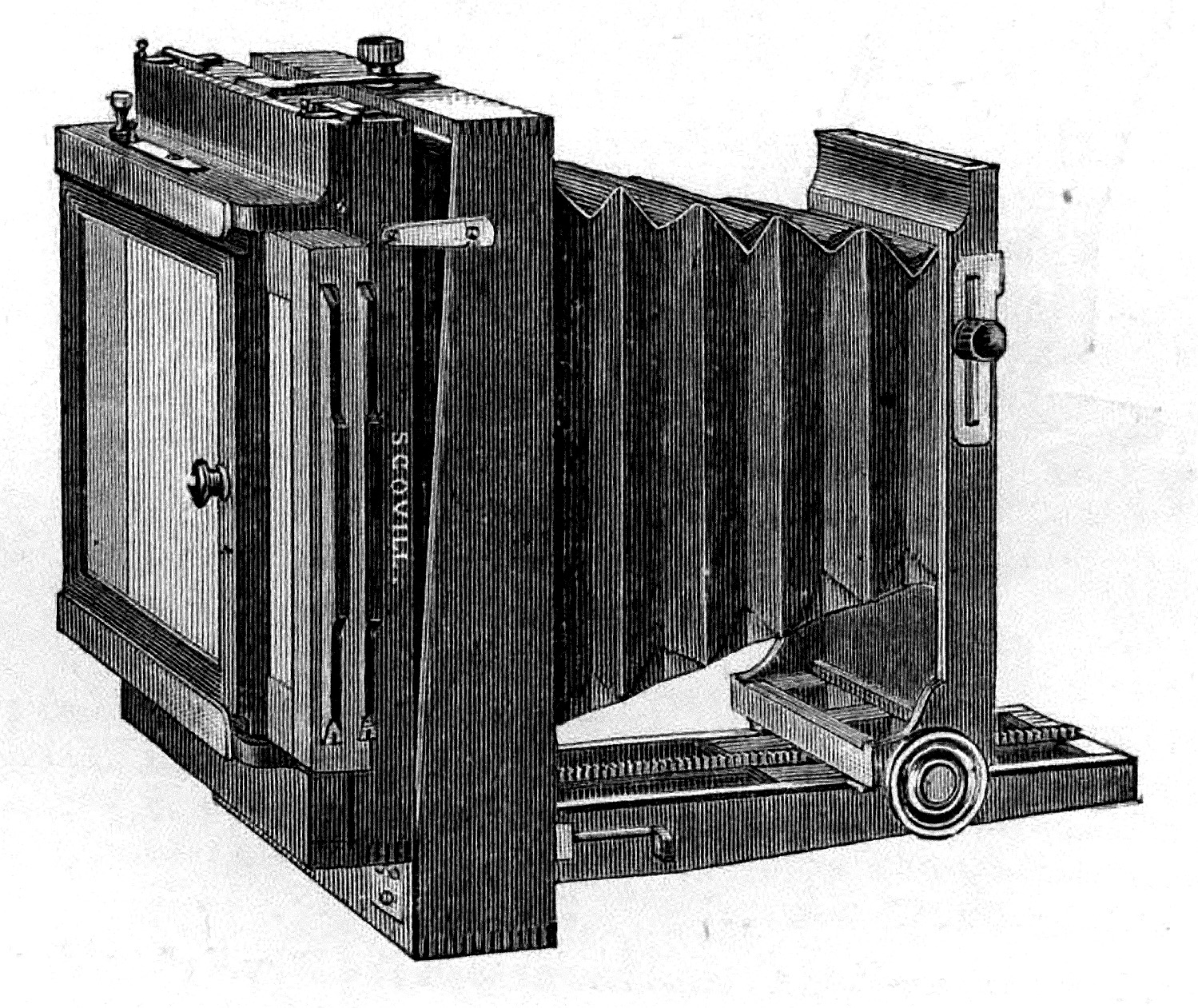

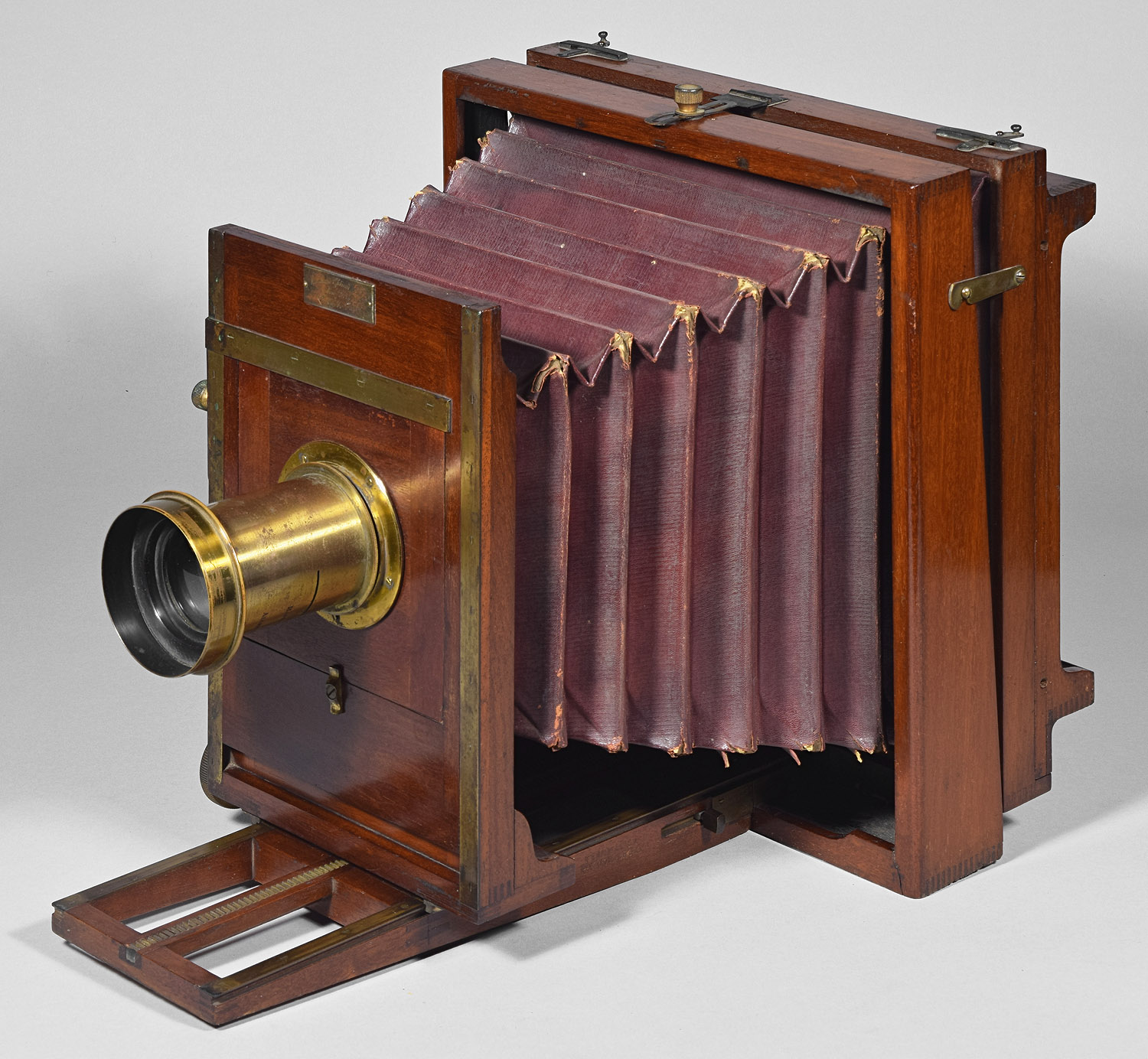
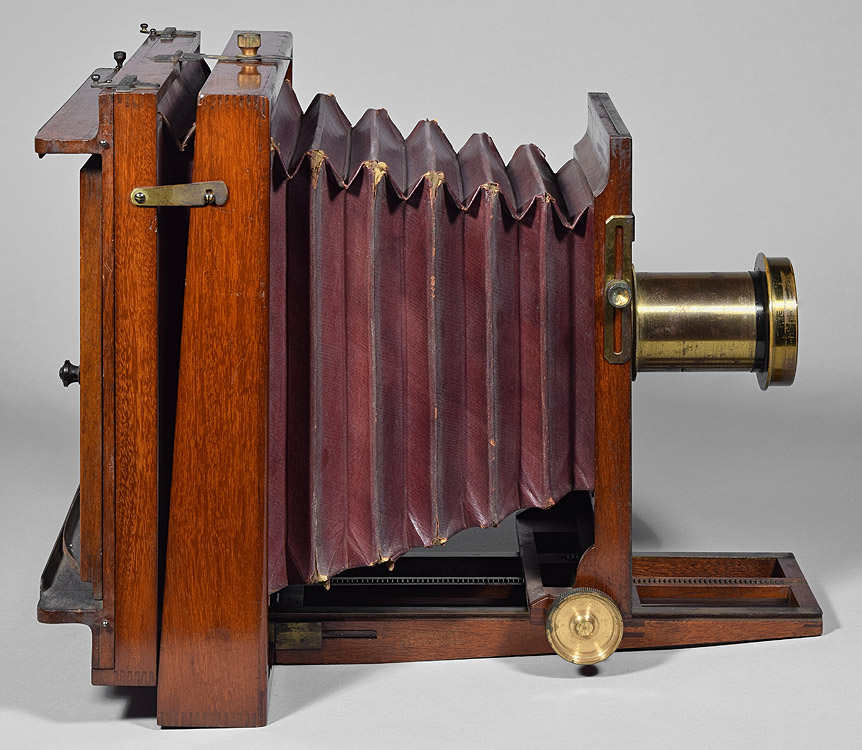
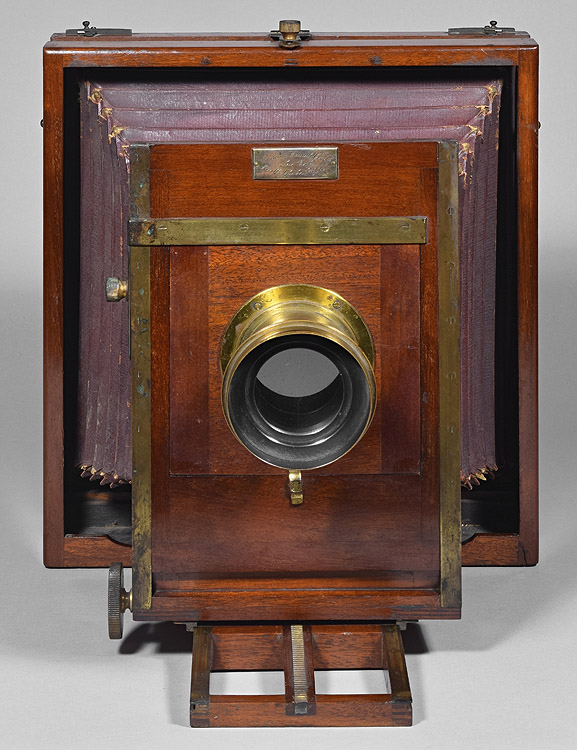
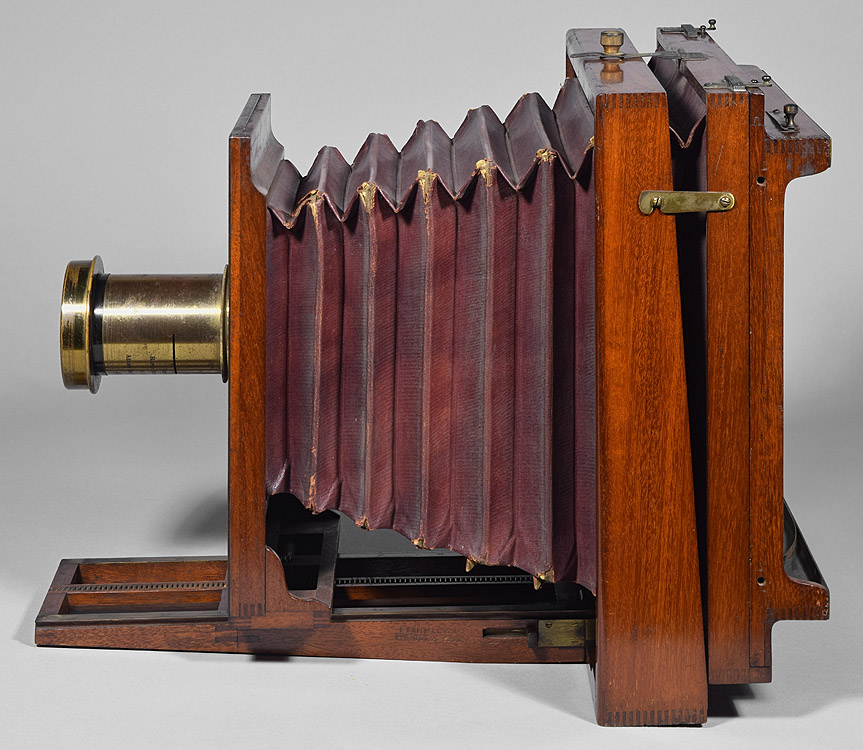
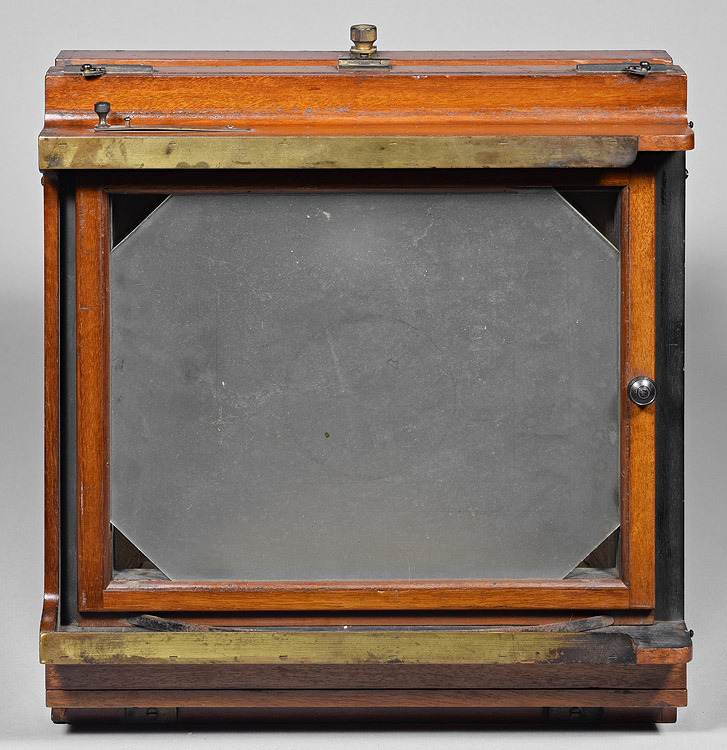
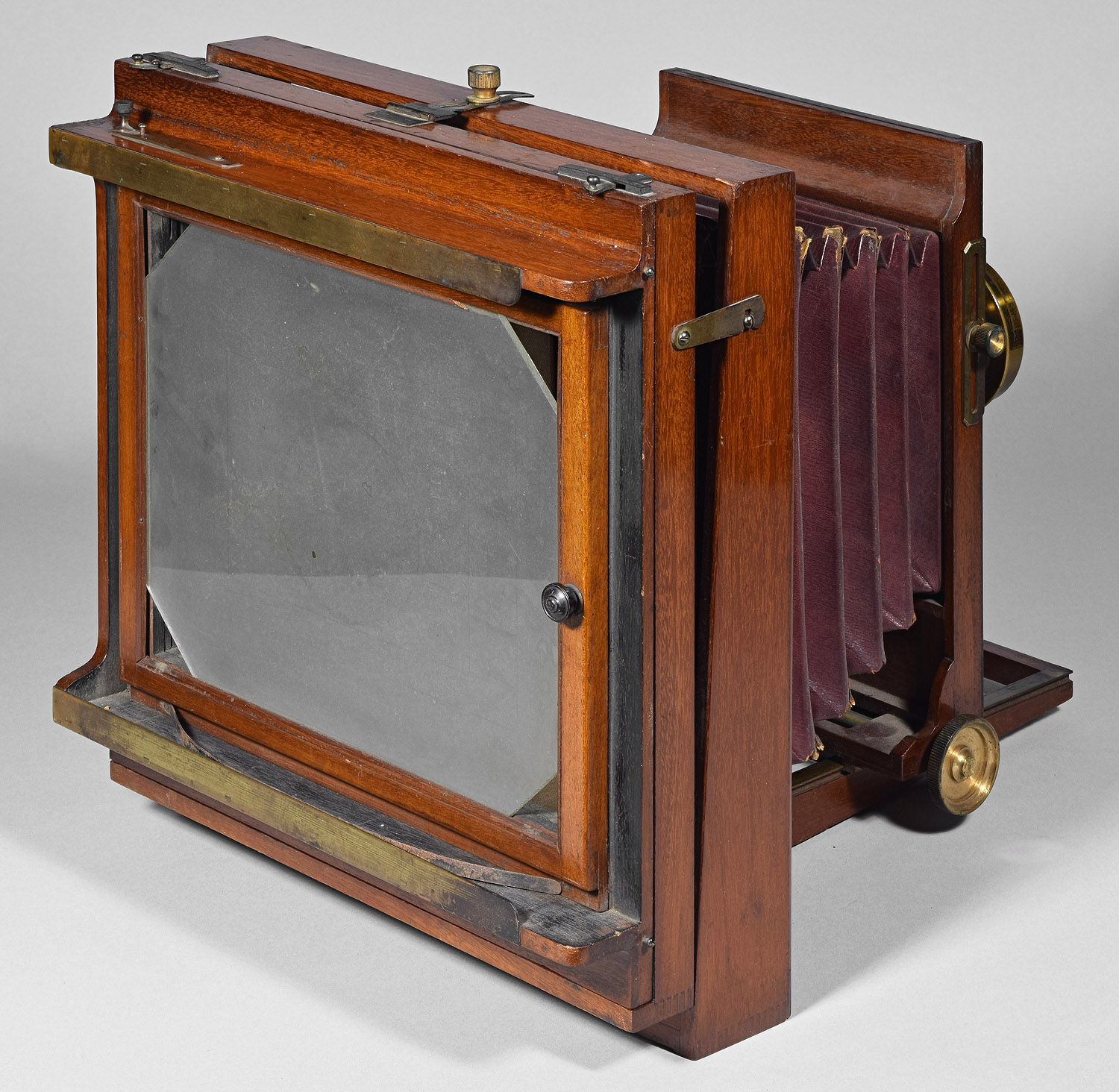
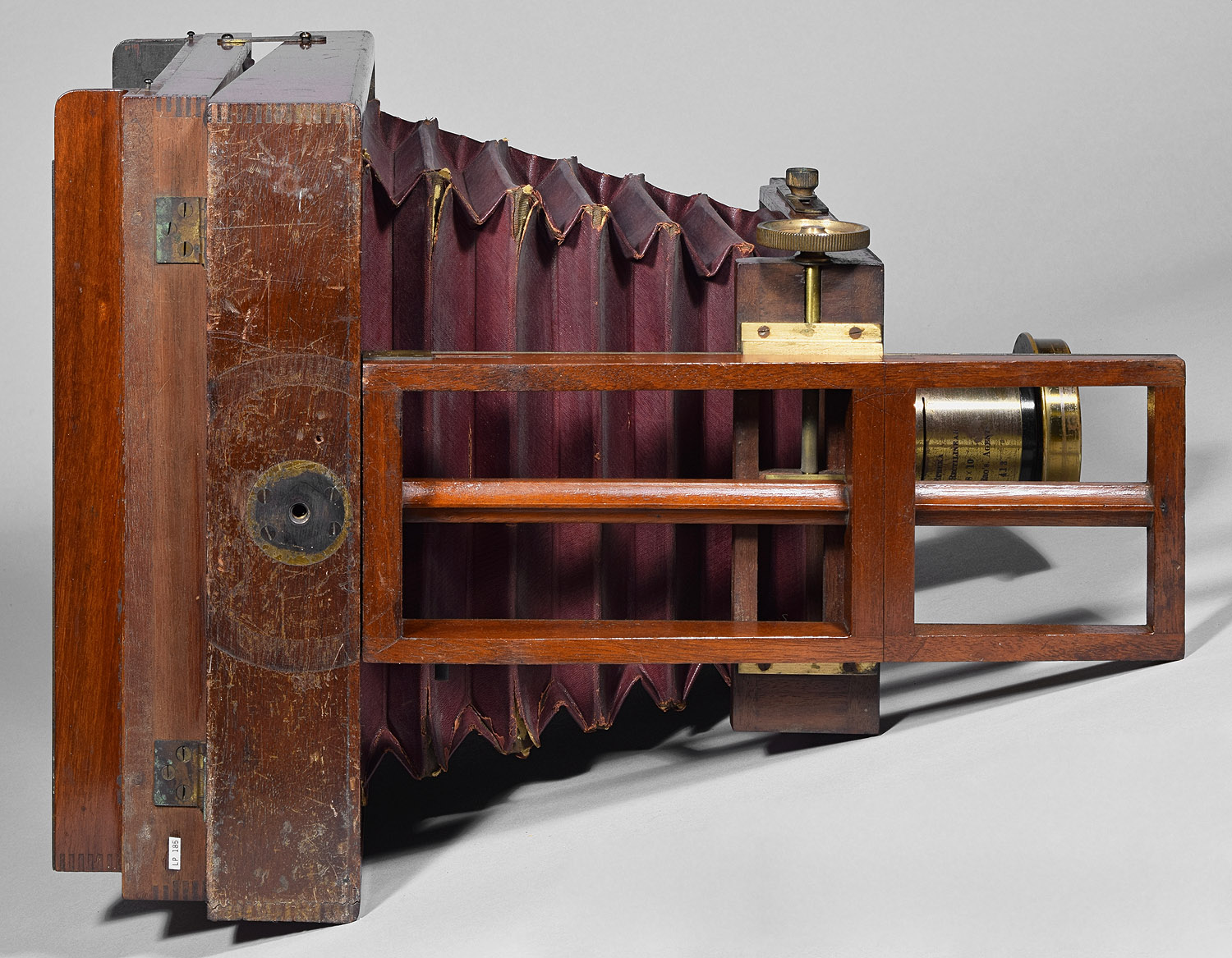
Note the typical American Optical alignment of screw slots on the brass
hardware, both horizontally and vertically.
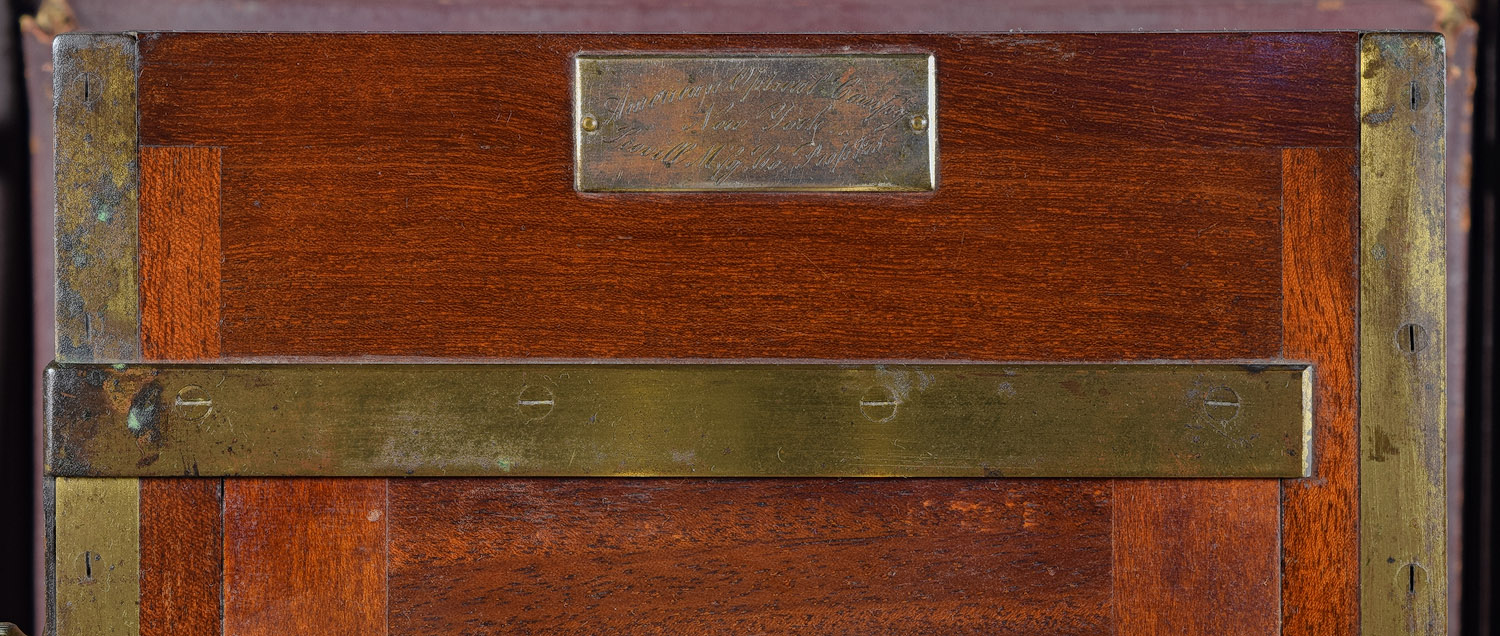



Date Introduced: - ; Years Manufactured:
c.1885-1889
Construction: front focus
via rack and pinion (single gear track on top of middle base rail);
no, single or double swing; reversing by
removable back; three-piece lens board
Materials: mahogany body; cherry base;
black fabric bellows; brass hardware
Sizes Offered: #110: 4x5; #111: 4 ½x5 ½;
#112: 4 ½x6 ½; #113: 5x7; #114: 5x8; #115: 6 ½x8 ½; #117: 8x10;
#118: 11x14
Notes:
The American Optical/Scovill & Adams
Co. Four Spring Back
This back consists of a ground
glass frame connected to the back of the rear standard using four
springs, one in each corner, and each about 2-3 inches long. As
One end of each spring is tightly screwed to the rear standard, while
the other end applies pressure onto the middle of a hinge made of sheet
brass about 2 inches long, which is attached, one end to the ground
glass and the other to the rear standard, via round-head wood screws
long enough to act as axles. Three of the corners appear as in the
left hand photo below. The fourth corner contains the spring, but
also an extra bit of hardware attached to the sheet brass that catches
in an open position on a post. This is shown in the right hand
photo below.
References:
Back to American Optical
Co. / Scovill Mfg. Co. (alphabetical)

This type back found on a number of cameras in this
collection, including: A similar back is found on the 1)
Scovill & Adams labeled
Acme Reversible Back View Camera Variation 3, 2)
unlabeled
Albion Variation 3, 3)
American Optical, Scovill & Adams Co., Prop'rs
labeled Compact View Variation 2 or Irving View Variation 2,
4) American Optical,
Scovill & Adams Co., Prop'rs labeled Irving View Variation 1.(known
to have been introduced in March, 1892), 5)
Scovill & Adams labeled
St. Louis View Camera Variation 3, and 6)
Star View Camera
(introduced 1890) - one example labeled
The Scovill & Adams Co., the other example labeled
American Optical Co., Scovill & Adams Co.,
Prop'rs).
From the example cameras from six models that have four
spring backs, we find that all but one camera (and that one is unlabeled
and so indeterminate) are labeled and thus can be dated from when
The Scovill & Adams Co. were
proprietors of the American Optical Co.,
that is, 1889-c.1899. It would therefore appear that the four
spring back was introduced approximately when
Scovill Mfg. Co. changed to
The Scovill & Adams Co. in
1889. The four spring design was patented in
1889 (granted to Scovill Mfg. Co. (W.H. Fuller, assignor), #407587, 23
Jul 1889), but, unlike most of their patents, the patent information is
not stamped into the wood or otherwise appear on cameras using the
patent.
That the St. Louis
Variation 3 has this four spring back, it represents a
chronologically later version than
Variation 1 and Variation 2,
which have the clunky spring back.
Photographic Times 15, 1885, p. 583
Scovill's Photo. Series No. 1, The Photographic
Amateur, 2nd Edition, J. Traill Taylor,
Scovill Mfg. Co. pub. (New York, NY), 1883,
2nd Ed. about 1885, p. a13
Scovill's Photo. Series No. 17 - First Lessons in Amateur Photography,
Randall Spaulding, Scovill Mfg. Co. pub. (New York, NY), copyright 1886,
p.a11
How to Make Photographs and Descriptive Price List,
Scovill Mfg. Co. (New York, NY), distributed by
Andrew J. Smith (Providence, RI),
1886, p. 37
Scovill's Photo. Series No. 20, Dry
Plate Making for Amateurs, Scovill Mfg. Co. (New
York, NY), 1886, ads p. 13
Catalog P, Photographic Material, J. W.
Queen & Co. (Philadelphia, PA), 1886, p. 61 (As
St. Louis)
Photographic Lenses and How to Select Them, James W. Queen & Co.
(Philadelphia, PA), 1887, p. 27
How to Make Photographs and Descriptive Price List,
Scovill Mfg. Co. (New York, NY), distributed by
C.H. Codman & Co. (Boston, MA), April 1887, p.
35
Scovill Manf'g
Co. Catalogue Photographic Goods, June, 1887,
David Tucker & Co. (Buffalo, NY), June, 1887, p.19
The American Annual of Photography and Photographic Times Almanac for
1888, C.W. Canfield, ed.; Scovill Mfg. Co. (New York, NY), copyright
1887, ads p. 20 (engraving in a ad for N.C. Thayer & Co., Chicago, IL)
The American Annual of Photography and Photographic Times Almanac for
1888, C.W. Canfield, ed.; Scovill Mfg. Co. (New York, NY), copyright
1887, ads p. 55
How to Make Photographs and Descriptive Price List,
Scovill Mfg. Co. (New York, NY),
undated but about January 1888, pp. 39-40
An
Illustrated Catalogue of Photographic Cameras, Lenses and Other
Apparatus and Materials for Photography, W.H. Walmsley & Co.
(Philadelphia, PA), April 1, 1888, p. 22
How to Make Photographs and Descriptive Price List,
Scovill Mfg. Co. (New York, NY), May 1888, p. 27
How to Make Photographs and Descriptive Price List,
Scovill Mfg. Co., distributed by John Wanamaker
(Philadelphia, PA), June 1888,
p. 27
How to Make Photographs and Descriptive Price List,
Scovill Mfg. Co. (New York, NY), distributed by C.H.
Codman & Co. (Boston, MA), September
1888, p. 27
How to Make
Photographs and Descriptive Price List, Scovill Mfg. Co. (New York,
NY), November 1888, p. 27
How to Make Photographs and Descriptive Price List,
Scovill Mfg. Co. (New York, NY), distributed by Buchanan, Bromley
& Co. (Philadelphia, PA) Catalog, 1888
Scovill's Photographic Series No. 26,
The Photographic Instructor, Prof.
Charles Ehrmann, Scovill Mfg. Co., 1888,
ads p. xv
How to Make Photographs and Descriptive Price List,
The Scovill & Adams Co.
(New York, NY), January 1889, p. 26
How to Make Photographs and Descriptive Price List,
The Scovill & Adams Co. (New York, NY), distributed by Buchanan,
Bromley & Co. (Philadelphia, PA) Catalog, 1889
Photographic Materials 1889, James
W. Queen & Co. (Philadelphia, PA), 1889, p. 63
Photographic Materials Illustrated, John Wanamaker, Philadelphia,
PA, c.1890, pp.4-5
Photographic Material,
Catalogue O & P, James W. Queen & Co. (Philadelphia,
PA), 1891, p. 49
